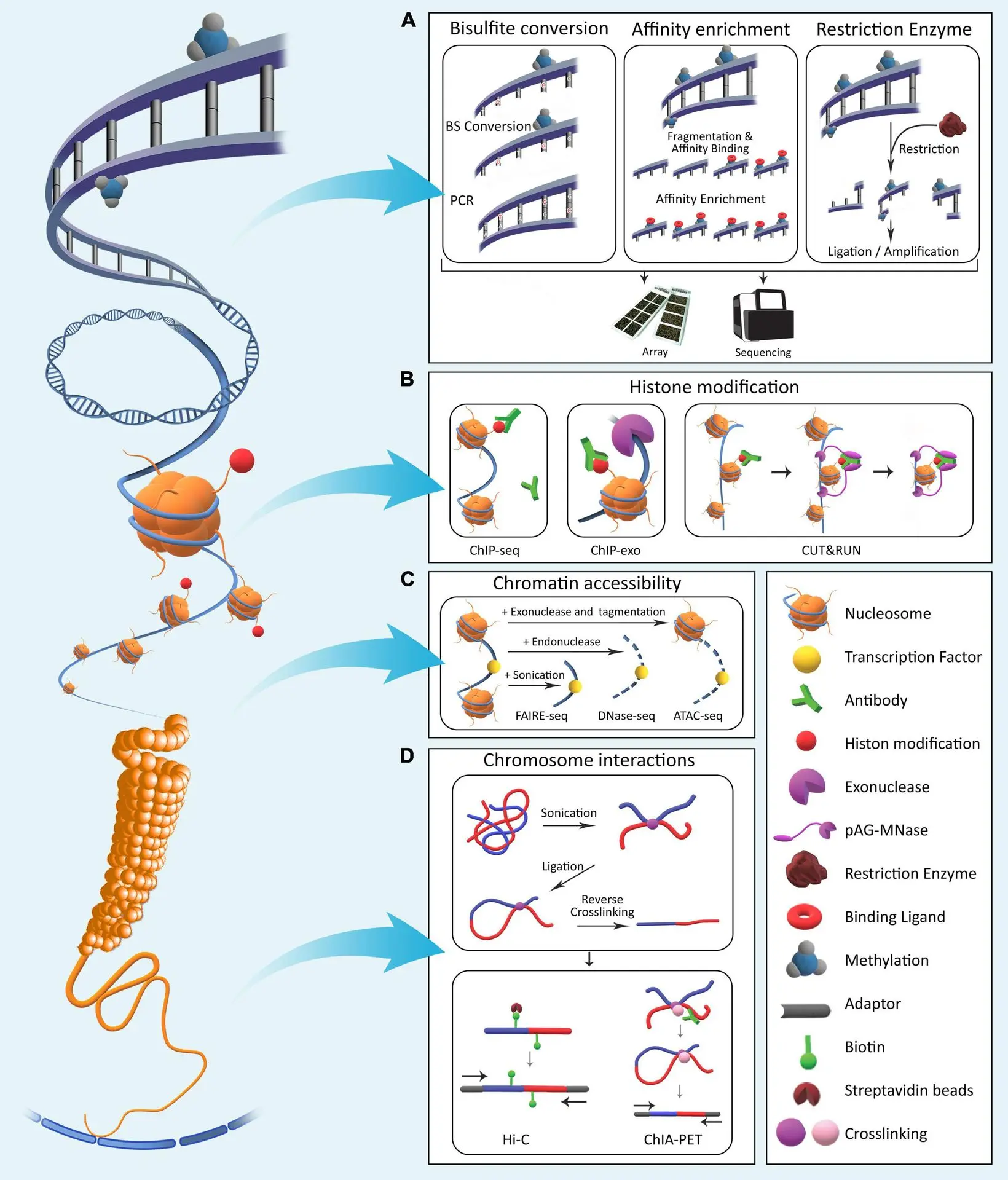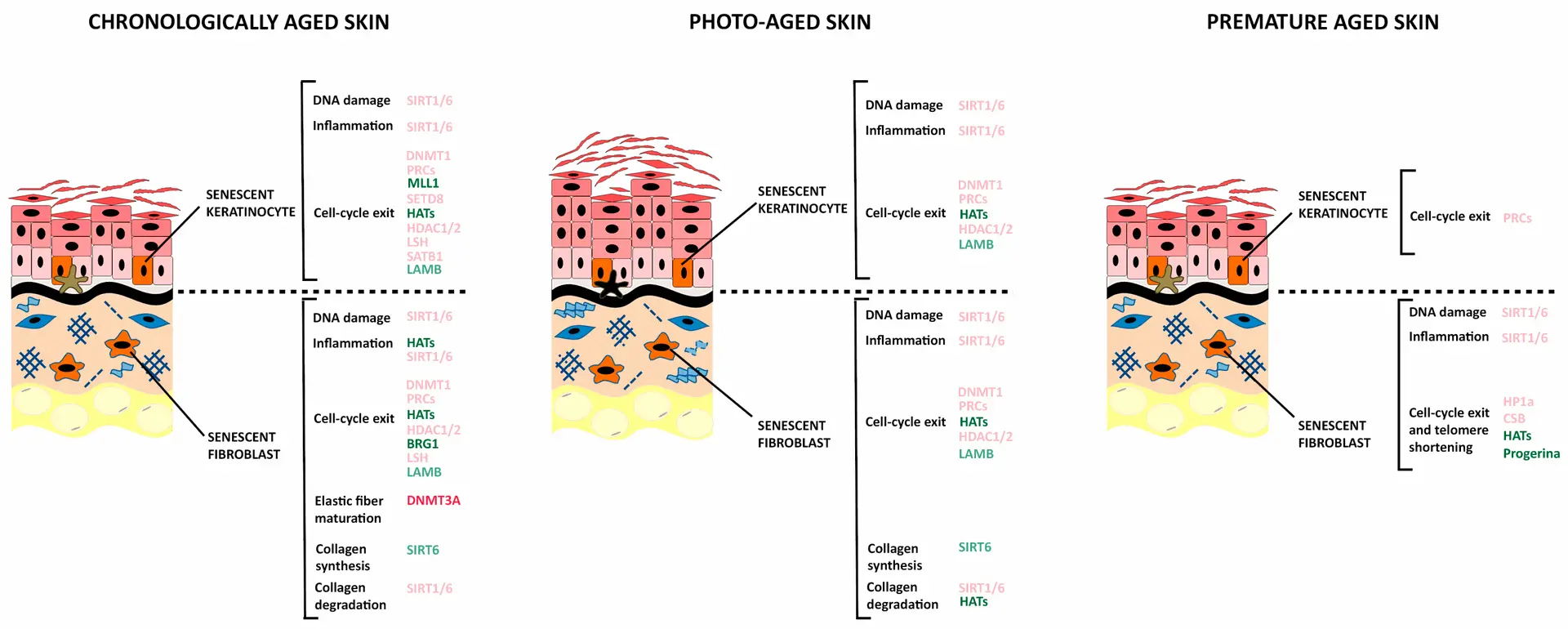Introduction
In modern molecular biology, the study of genetics has revealed the sequence of the human genome but that’s only part of the story. What determines which genes are active or silent in different cells? Why do identical genomes produce different cell types? The answers lie in the field of epigenetics.
Epigenomic sequencing explores molecular changes that regulate gene activity without modifying the underlying DNA sequence. These epigenetic mechanisms such as DNA methylation, histone modifications, and chromatin remodeling act as switches and dimmers, influencing how genes function in different biological contexts.
This powerful technology is transforming research and biotechnology by providing insight into development, environmental responses, and cellular behavior.
Historical Overview of Epigenomic Sequencing
Origins of Epigenetics
The concept of epigenetics emerged to explain how genes are regulated beyond the DNA code. Over time, scientists discovered that specific chemical modifications such as the addition of methyl groups to DNA or modifications to histone proteins play a critical role in regulating gene expression.
From Genetics to Epigenomics
As sequencing technologies evolved, researchers began mapping not only the genome but also the epigenome the collection of chemical markers that influence gene activity. This shift from studying isolated genes to exploring genome-wide regulatory landscapes marked the beginning of epigenomic research.
Early efforts focused on DNA methylation profiling and chromatin immunoprecipitation, which later expanded into high-throughput methods for studying chromatin accessibility and 3D genome organization. This evolution gave rise to today’s diverse and robust epigenomic sequencing technologies.
Importance of Epigenomic Sequencing
Revealing Gene Regulation
Epigenomic sequencing offers a window into how different cells with the same DNA express unique sets of genes. It helps decode the instructions that determine whether a gene is turned on or off in a particular cell type, enabling a deeper understanding of cell identity and function.
Understanding Environmental Influence
Unlike genetic mutations, epigenetic changes can be influenced by external factors such as nutrition, stress, chemical exposure, or aging. Epigenomic sequencing allows researchers to monitor how the environment leaves a molecular footprint on the genome, supporting studies in adaptation and health.
Supporting Advanced Research and Innovation
By identifying key regulatory elements, epigenomic data enhances efforts in synthetic biology, bioprocessing, regenerative medicine, and functional genomics. It provides foundational knowledge for modifying gene expression patterns in a controlled, targeted manner.
Advantages Over Classical Genomics
| Traditional Genomics | Epigenomic Sequencing |
|---|---|
| Focuses on DNA sequence | Focuses on regulatory elements |
| Identifies mutations | Reveals functional gene regulation |
| Static data | Dynamic and time-sensitive |
| Does not show chromatin state | Includes chromatin structure info |
Applications of Epigenomic Sequencing
1. Developmental Biology
In multicellular organisms, epigenetic modifications guide the transformation of stem cells into specialized tissues. Epigenomic sequencing tracks epigenetic reprogramming across stages of development, revealing how cells acquire and maintain their identity.
2. Cellular Reprogramming and Differentiation
When scientists induce cells to change identity such as converting skin cells into neurons epigenomic sequencing helps monitor the process by evaluating changes in DNA accessibility, methylation status, and histone markers.
3. Biological Research and Functional Genomics
Comparing epigenomes from different conditions or experimental models reveals regulatory elements that respond to specific stimuli. These elements may influence stress responses, cellular aging, or metabolic activity, helping researchers pinpoint functionally relevant regions of the genome.
4. Systems Biology and Omics Integration
Epigenomic data is now routinely integrated with transcriptomics, proteomics, and metabolomics to create a more complete picture of gene expression networks. This multi-layered approach improves understanding of complex biological systems.
Future of Epigenomic Sequencing
Single-Cell Epigenomics
Conventional methods average signals from thousands of cells, which can mask differences between individual cells. Single-cell epigenomic sequencing provides detailed information on cellular diversity and heterogeneity, especially valuable in development, immunology, and complex tissues.
Integration with Artificial Intelligence
Advanced computational models are being used to predict gene regulation and cell behavior based on epigenetic features. Machine learning techniques help interpret large-scale datasets and uncover hidden patterns in regulatory networks.
Portable and Real-Time Sequencing
New platforms are being developed to perform epigenomic sequencing in real time, with smaller instruments that may be used directly in clinical, agricultural, or field settings for rapid decision-making.
Personalized Health Monitoring
Epigenomic changes are being explored as biological indicators for health status, aging, and wellness. In the future, regular health assessments may include epigenetic panels that track the body’s response to lifestyle, environment, and physiological changes.
Sustainable and Ethical Applications
As epigenomic technologies expand, ethical and sustainability considerations will become essential. Transparent data practices and responsible use of epigenetic information will ensure that discoveries benefit society while respecting privacy and diversity.
Conclusion
Epigenomic sequencing is unlocking the hidden regulatory layer that governs how genes are expressed and silenced. Unlike traditional genomics, it captures a dynamic and responsive layer of molecular biology that shapes development, adaptation, and biological complexity.
This technology is now at the heart of many scientific disciplines from understanding early development and environmental adaptation to engineering gene expression in cells. Its future is equally promising, offering tools for personalized insights, advanced diagnostics, and systems biology.
By investing in epigenomic research, the scientific and technological communities can access deeper knowledge and broader possibilities, paving the way for more precise, adaptive, and ethical applications in the years to come.

